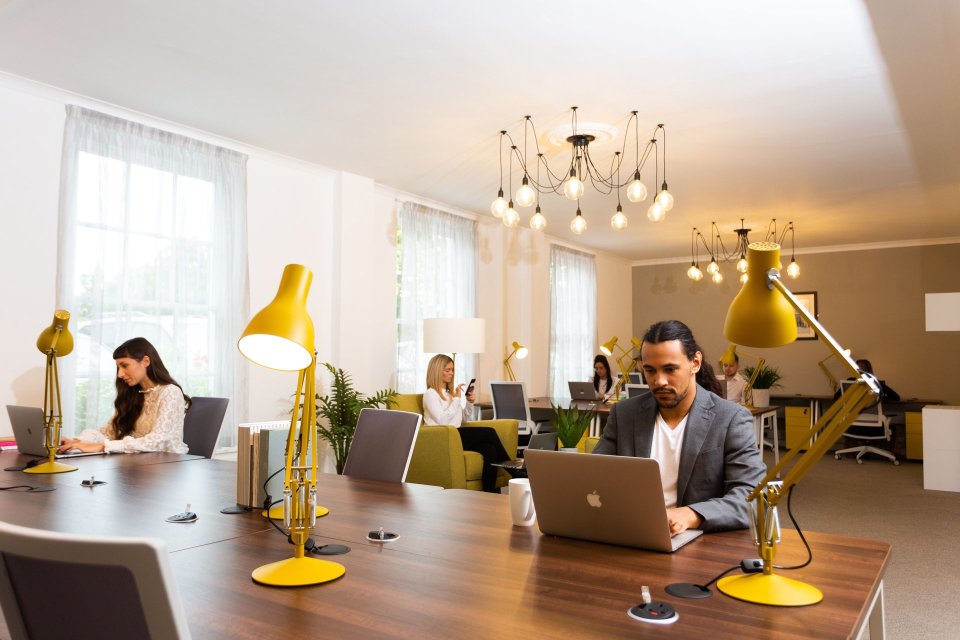Flexible working and how to implement it
By Bruntwood

Is flexible working the new default and should you implement it?
The legal right to request flexible working was introduced in the UK back in 2014. However, just 9.8% of jobs paying more than £20,000 are advertised as being flexible, even though 87% of workers would like the option. This is according to MP Helen Whately, who introduced a flexible working bill to Parliament in July 2019, arguing that it should be the default position for all employees, and that it would help close the gender pay gap, assist parents to share childcare and help businesses retain staff.
It’s clear flexible working is a movement that is gaining more traction and being adopted by many businesses to their benefit.
What is flexible working?
According to Gov.uk it’s a way of working that suits an employee's needs. It could be having flexible start and finish times, or having the option to work from home. All employees have the legal right to apply for flexible working if they have worked for their employer for 26 weeks or more, but whether it is granted is at the discretion of the company.
Types of flexible working:
- Job sharing - Working from home - Part time - Compressed hours - Flexitime - Annualised hours - Staggered hours - Phased retirement
Benefits of flexible working
Mother Pukka’s Flex appeal Tedx Talk, ‘How to be a happy chicken’ likens the UK workforce to battery hens with an output matching. Flexibility is biased towards the employer and on average we put in 38 days unpaid overtime each year. This has not been to the benefit of the economy, as the UK is losing 15.4 million days per year due to work-related stress. We might work the longest hours in Europe, but we are still the least productive.
Something clearly isn’t working. How do we become happy free range chickens and is flexible working the answer?
According to John Quinton-Barber of Social Communications, a Bruntwood customer at Platform, our premier office space in Leeds, then yes. In his Linkedin blog ‘Five Things I’ve Learnt From Flexible Working’ he comments. “I can honestly say that since we have introduced our flexible working culture, productivity has increased and continues to do so”.
It’s not just independent businesses taking advantage of this new way of working. Global tech giant Microsoft took space in Bruntwood’s Neo building (one of our Manchester office buildings) purposely because it was designed for agile working and suited their flexible approach, providing remote teams with a hub they could access as and when they needed.
Some businesses have taken it one step further. Pursuit Marketing in Glasgow reduced their working week to four days while maintaining the staff remuneration packages of a five day week. Pursuit Marketing believe this action has increased productivity by 30% and doubled turnover.
There are a number of tangible benefits for companies adopting this new style of working:
- Employees become more productive from the resulting improvements in morale and health with a better work-life balance.
- Recruitments costs are reduced as existing staff stay longer and the business becomes more attractive to new staff. Research from Werk indicates that a flexible working policy is no longer a perk for attracting talent but a necessity.
- Absenteeism reduces along with the associated costs to the business in lost time.
- Even just allowing staff to work from home one day a week will reduce the carbon footprint of your business.
- Offering flexible working can have a positive impact on diversity and inclusion and has the potential to close the gender pay gap as employees such as working mothers or carers that couldn’t work full time with fixed hours can now consider it as an option.
The impact of flexible working on office design
With more staff working remotely, it reduces the need for them to have their own permanent desks. The consequence is a rise in hot-desking to accommodate a more transient workforce which in turn reduces the amount of office space employers need to occupy. It provides businesses a real opportunity to reduce costs as they occupy space more efficiently. So how does this impact office design?
According to a recent Savills survey, 45% of their respondents believed hot-desking decreases their productivity. Rising noise levels in open-plan layouts can in part be to blame for employees struggling to focus on work. Employees need a choice in environments that suit the task at hand. Dedicated quiet rooms can help with work requiring concentration whilst collaboration could be facilitated with breakout space.
Employers should also consider the implications of hot-desking on team working. With fewer teams sitting together on a regular basis this reduces the opportunity for chance conversations that spark ideas whilst potentially eroding team bonding. One way to combat this is through shared desks dedicated to individual teams so that when staff are in the office they touch down with their other team members.
How to implement flexible working
Invest in good technology. Adopt a Cloud-based approach to your work that allows employees to work anywhere.
Go beyond just the legal requirement to consider it. Have the policies and procedures to back it up but adopt it as a culture within the workplace.
Communicate it internally, but also externally to those people you’re looking to attract into the business.
Put trust in your staff. Measure their productivity not presentism.
Consider flexible office space products to support you. Coworking memberships and serviced offices are an easy way to perhaps trial a satellite office to provide a local hub for staff or touch down space for staff on the move or space away from the main office for focus work.
To take your first steps towards flexible working find out more about the flexible office products offered by Bruntwood.
Stay Connected!
Sign up to our newsletter for the latest news, updates and offers.